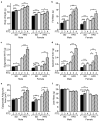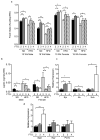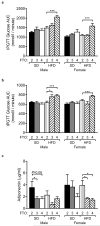Overexpression of Fto leads to increased food intake and results in obesity
- PMID: 21076408
- PMCID: PMC3018646
- DOI: 10.1038/ng.713
Overexpression of Fto leads to increased food intake and results in obesity
Abstract
Genome-wide association studies have identified SNPs within FTO, the human fat mass and obesity-associated gene, that are strongly associated with obesity. Individuals homozygous for the at-risk rs9939609 A allele weigh, on average, ~3 kg more than individuals with the low-risk T allele. Mice that lack FTO function and/or Fto expression display increased energy expenditure and a lean phenotype. We show here that ubiquitous overexpression of Fto leads to a dose-dependent increase in body and fat mass, irrespective of whether mice are fed a standard or a high-fat diet. Our results suggest that increased body mass results primarily from increased food intake. Mice with increased Fto expression on a high-fat diet develop glucose intolerance. This study provides the first direct evidence that increased Fto expression causes obesity in mice.
Figures






Comment in
-
FTO gains function.Nat Genet. 2010 Dec;42(12):1038-9. doi: 10.1038/ng1210-1038. Nat Genet. 2010. PMID: 21102620 Free PMC article.
-
FTO and obesity: the missing link.Cell Metab. 2011 Jan 5;13(1):7-8. doi: 10.1016/j.cmet.2010.12.016. Cell Metab. 2011. PMID: 21195343
References
Publication types
MeSH terms
Substances
Grants and funding
LinkOut - more resources
Full Text Sources
Other Literature Sources
Medical
Molecular Biology Databases

